Having looked at the variety of lee boards and their shapes in Todd Bradshaw's Book I then went to look for suitable timber amongst my recent off cuts and "bits that are generally in the way" pile!
Unfortunately I didn't come across anything suitable for the one piece designs but luckily I found a plank of very warped, badly sawn Sapele that was very twisted and as thin as 10mm on one side whilst the other edge of the plank was around 23mm rough sawn. This makes it not much use for many things but it could be planed up and cut into relatively narrow pieces to make a Morris style Lee Board. I combined it with some sycamore off cuts from a table top I made recently and planed, glued and sanded up timber for a pair of boards.
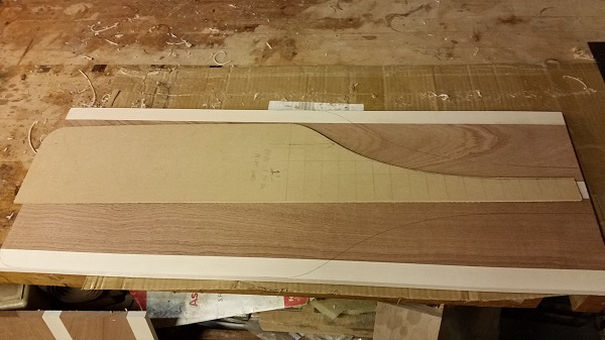
You can also see the half template I made and used to mark out the shape before cutting them out on the bandsaw. Here they are cut out.
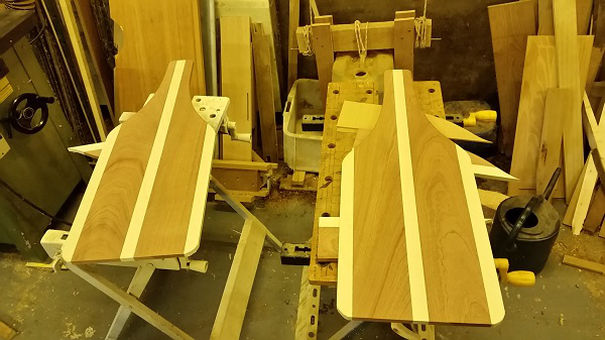
The edges were tidied up with a spokeshave and then routed to a nice tactile radius
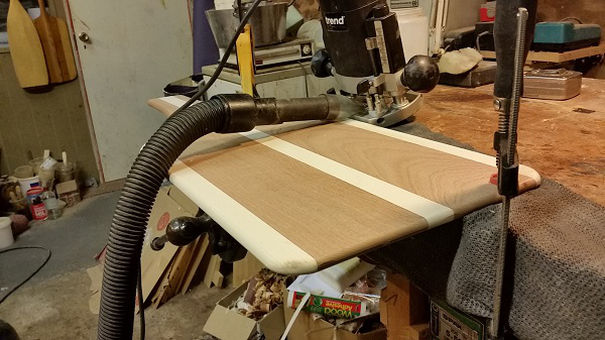
Next comes glassing. As the more observant may have noticed, if you compare them to most lee boards they are a bit thin so they need to be covered in epoxy resin and fibreglass in the same way as my boats. This will increase their strength whilst not adding much to the weight or bulk. Also they will not require as much shaping as a regular board but the time saved doing this will be lost again in the glassing process but it does make them look good.
First the cloth is cut to size.
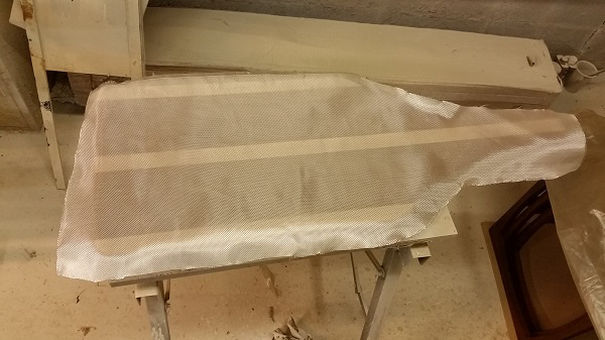
Then it is coated with resin and stuck to one side. If at this stage you turn it over it will fall off so I leave it to set for an hour or two, squeegee it to make sure it is flat trim the edges, and then give it another coat.
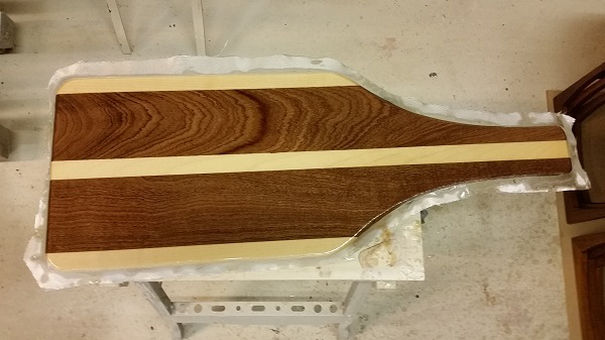
and that's where I left both boards to set overnight till next time.
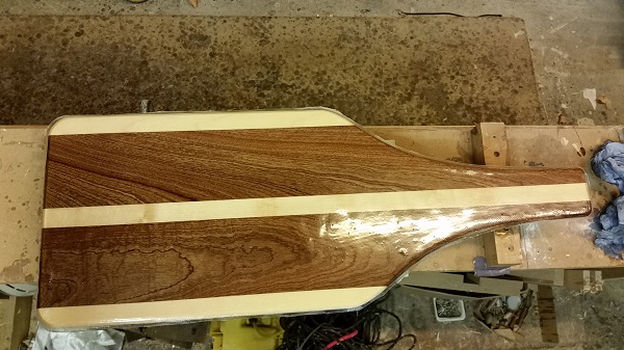
Once they have set they can both be handled again so I trim off the cloth around the edges.
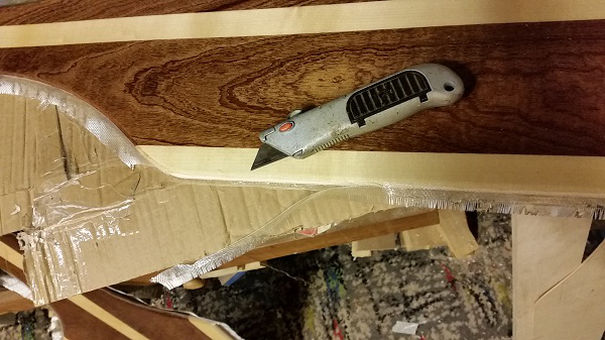
Next the edges are sanded to remove any lumps of resin and feather the edge of the cloth.
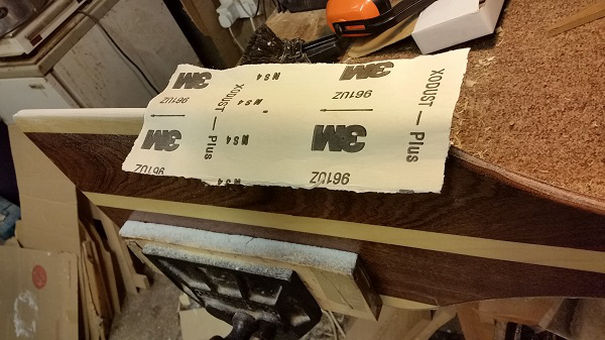
Strips of cloth are then cut out to go around the edges.It is important that the weave of the cloth runs at 45 degrees for this or it won't conform to the curve.
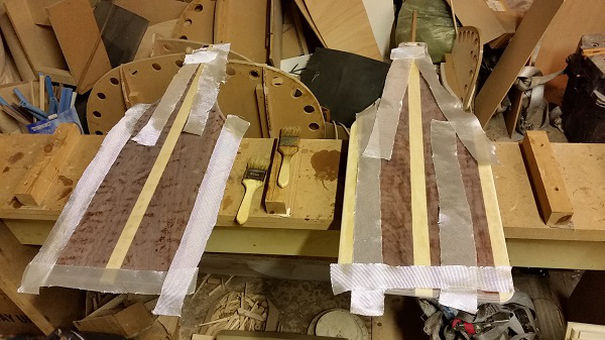
These strips of cloth are wetted out with resin and carefully worked around the edges. This is tricky especially on the corners and it is a slow operation requiring patience.
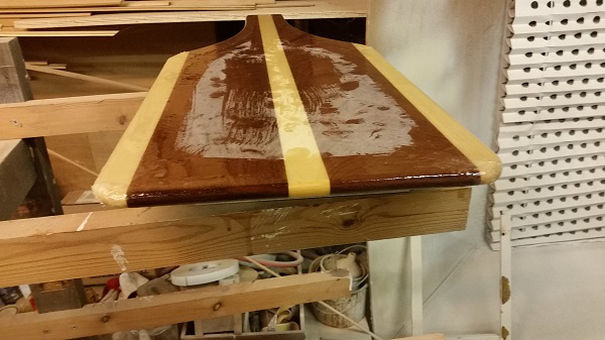
After a couple of hours the edges are given another coat of resin and then left to set overnight again.
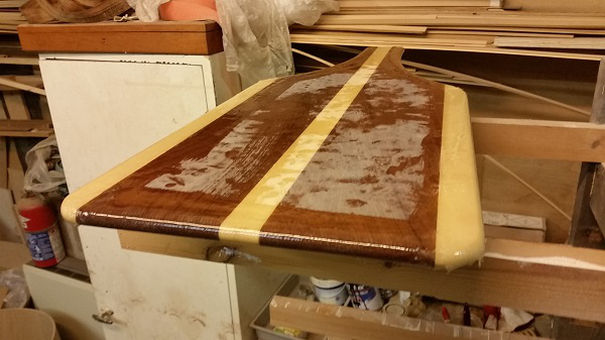
Next day both lee boards are sanded and the cloth around the edges is carefully feathered into the flat surface
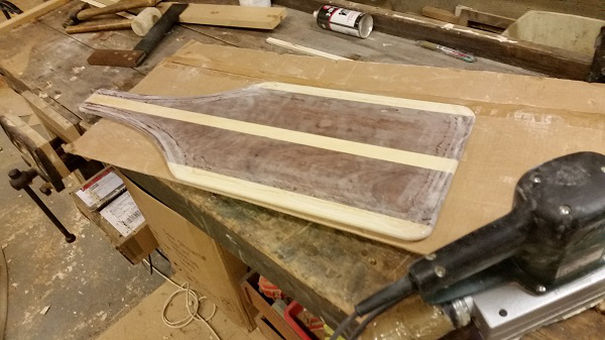
and the glass around the edges is tidied up
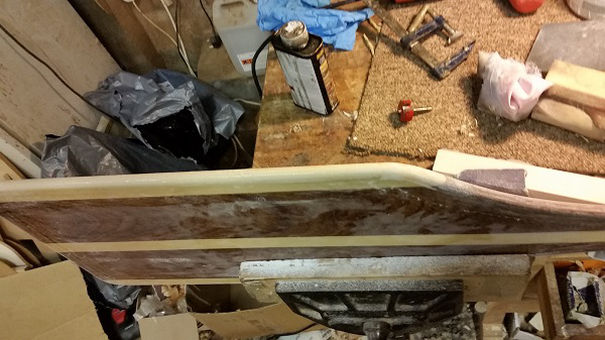
Then they are given two more coats of resin allowing it to dry till tacky between coats and the cloth weave is filled completely.
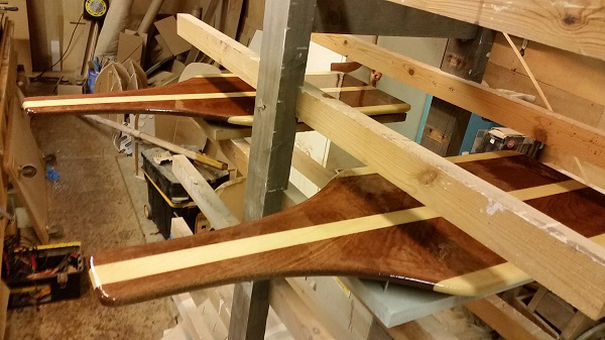
They are still not finished at this stage as they have to be varnished and I need to drill the holes for
the bolts that they will pivot on but you can see what we are aiming at.
Alick (info@rutlandwoodcraft.co.uk)













